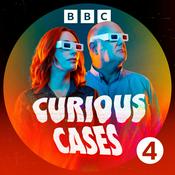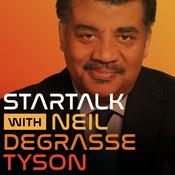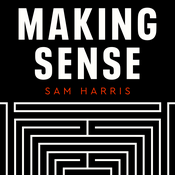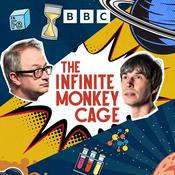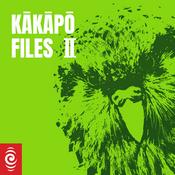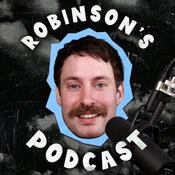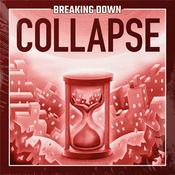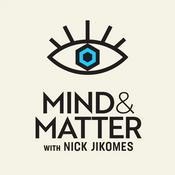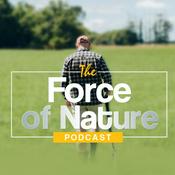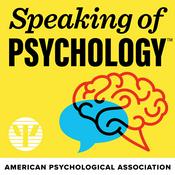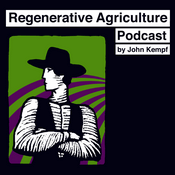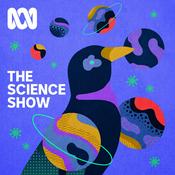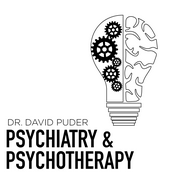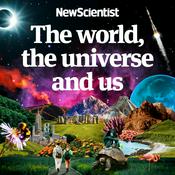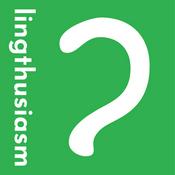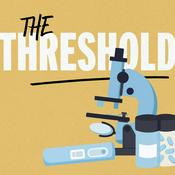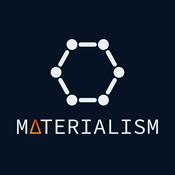354 episodes
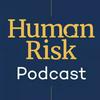
Dr Guy Champniss on Business, BeSci and AI
07/12/2025 | 1h 1 mins.
Are we losing our ability to think critically as we rely more on AI?Episode SummaryMy guest is social psychologist Dr Guy Champniss to explore the role of behavioural science in business and the emerging challenges of AI in the workplace. We discuss why behaviour change is so hard to sell, the myth that behavioural science is only needed when everything else fails, and how organisations often overlook the human factors in transformation. Guy brings deep insight into how behavioural science is perceived inside organisations—often as a last resort when more traditional methods fail. We examine why that is, and how a better understanding of human behaviour can actually de-risk strategy, improve engagement, and lead to more successful outcomes. We also explore the psychology of AI: how we trust it, how we interact with it, and what we might be losing in the process. From loss of credibility and collaboration among employees, to the risks of over-automation and cognitive offloading, the conversation raises timely questions about what kind of future we're building, and how prepared we really are.You'll hear thoughtful takes on the challenges of selling behavioural science, powerful metaphors to help reframe the debate, and real-world examples from the classroom to the call centre. If you’re curious about the intersection of technology, psychology, and organisational behaviour, this is a must-listen.About Guy Champniss Dr Guy Champniss is a social psychologist and behavioural science practitioner. He teaches at IE Business School in Madrid and consults through Meltwater Consulting. Guy’s current work focuses on how AI is changing human behaviour in organisations—particularly its impact on trust, agency, and critical thinking. He’s also worked extensively in the sustainability space, helping businesses drive lasting behavioural change.AI Generated Timestamp Summary[00:00:00] – Intro to Dr Guy Champniss and sets up the discussion around behavioural science and AI.[00:03:30] – Behavioural Science’s Struggle for AcceptanceWhy it’s often brought in too late and why it needs itself to be sold effectively.[00:10:00] – Organisational Blind SpotsHow businesses resist behaviour-led approaches and prefer short-term fixes.[00:17:30] – From Sustainability to AIGuy’s journey into exploring the psychology of AI at work.[00:24:00] – AI and Human CredibilityWhat happens when AI performs better than people, and how that undermines trust. [00:30:00] – Trust and Bias in AIWhy we trust AI more when it agrees with us and the dangers that brings.[00:38:00] – AI’s Impact on CollaborationHow automation can quietly erode teamwork and critical thinking.[00:45:00] – Students and AIWhat AI use in classrooms reveals about thinking, learning, and shortcuts.[00:52:00] – The Real Future of WorkWhy it’s not AI replacing jobs—but people who know how to use it.[00:56:00] – Language, Labels, and ResponsibilityThe power of how we talk about tech and what it signals.LinksMeltwater Consulting, Guy's firm - https://www.meltwater-consulting.com/drguychampnissGuy on LinkedIn - https://www.linkedin.com/in/guychampniss/His academic profile at IE Business School - https://rhe.ie.edu/speaker/guy-champniss/Guy's research - https://www.researchgate.net/profile/Guy-ChampnissMcKinsey article on AI in Contact Centres - https://www.mckinsey.com/capabilities/operations/our-insights/the-contact-center-crossroads-finding-the-right-mix-of-humans-and-aiOnora O'Neil BBC Reith Lectures on A Question of Trust:Recording: https://www.bbc.co.uk/programmes/p00ghvd8Transcript: https://downloads.bbc.co.uk/rmhttp/radio4/transcripts/20020427_reith.pdfv

Professor Yuval Feldman on Can The Public Be Trusted?
23/11/2025 | 1h 5 mins.
Why do governments rely on coercion and punishment when voluntary cooperation often produces better, more sustainable outcomes?Episode SummaryOn this episode, I’m joined once again by Professor Yuval Feldman, who returns to explore the core question behind his latest book: Can The Public Be Trusted? Instead of asking how much we trust our governments, Yuval flips the script, asking how much governments trust us, and whether that trust is deserved. Together, we dive into the concept of voluntary compliance, where people follow rules not because they’re forced to, but because they believe in doing the right thing. We unpack the complexity of this idea through real-world examples, from tax compliance to environmental policy to COVID-19 interventions. Yuval explains why people who think they’re ethical can actually be the hardest to regulate, and how misplaced trust can lead to serious regulatory blind spots. We also explore the psychological tension between intrinsic motivation and external enforcement, and why regulators often default to command-and-control, even when trust might offer a better solution. As ever, Yuval makes nuanced, sophisticated ideas feel accessible and immediately relevant. You'll hear about the role of culture, the limits of nudging, why economists might (sometimes!) actually be right about human behaviour and how AI might help policymakers make better decisions. Guest BioProfessor Yuval Feldman is a legal scholar and behavioural scientist at Bar-Ilan University in Israel. A returning guest and the podcast’s very first interviewee, Yuval is internationally renowned for his work at the intersection of law, psychology, and behavioural economics. His new book, Can The Public Be Trusted? The Promise and Perils of Voluntary Compliance is available open-access via Cambridge University Press (link below).AI-Generated Timestamped Summary[00:00:00] Introduction: why this question of “can the public be trusted?” matters for regulation and risk[00:03:42] Yuval’s personal background: how he came into law + psychology and the origin of his VComp lab[00:09:15] Defining voluntary compliance: what it means, how it differs from coercion[00:14:52] Intrinsic motivation vs crowding out: when good intentions are undermined by heavy‑handed regulation[00:21:30] Designing regulatory systems for trust: frameworks and features that support voluntary compliance[00:27:47] Case study: Covid‑19 and public cooperation—what we learned about trust, compliance and enforcement[00:34:10] Tax compliance as a trust test: how citizens respond when they believe the system treats them fairly[00:39:58] Environmental regulation and the limits of voluntary strategies: when culture or technology create barriers[00:45:22] Cross‑cultural & technological dynamics: how digital reputation, culture and platforms impact compliance[00:50:05] The perils of voluntary compliance: when trust can be misplaced, manipulated or simply ineffective[00:55:30] Final reflections: what this means for risk professionals, policymakers and anyone designing systems of human behaviour[01:00:12] Closing: how to reframe regulation to see the public not as a risk but as a resource.LinksYuval's academic profile - https://law.biu.ac.il/en/feldmanHis profile on LinkedIn - https://www.linkedin.com/in/yuval-feldman-21942514/ His open-access book Can the Public Be Trusted? (Cambridge University Press) – https://www.cambridge.org/core/books/can-the-public-be-trusted/B3E11831E3051D4E928B9252B6767A4BYuval’s previous appearances on the show On The Law of Good People or ‘why we should write rules for good people not bad people’ (2019) - https://www.humanriskpodcast.com/professor-yuval-feldman-on-why/ On Trust & Voluntary Compliance (2022) - https://www.humanriskpodcast.com/professor-yuval-feldman-on-trust-compliance?

Dr Michael Hallsworth on The Hypocrisy Trap
16/11/2025 | 58 mins.
We all intuitively know that hypocrisy is a bad thing. But what if it isn’t a flaw, but a feature? But maybe the real problem isn’t hypocrisy, it’s how we think about it.Episode SummaryOn this episode, I'm talking to Dr Michael Hallsworth, a leading behavioural scientist and the author of The Hypocrisy Trap. We explore a topic that’s instantly recognisable but not often properly understood. Hypocrisy is something we’re quick to spot in others, slow to acknowledge in ourselves, and often design around as if it were avoidable or inherently wrong. What Michael reveals — through personal stories, behavioural experiments, and a careful unpacking of what hypocrisy really means — is that our judgments of hypocrisy say more about us than about the people we’re criticising. In fact, hypocrisy isn’t just common; it’s structurally baked into how we navigate competing priorities, conflicting values and real-world trade-offs. And sometimes, paradoxically, a little hypocrisy might even be useful.That makes it incredibly relevant to human risk. In compliance, ethics, and organisational culture, we tend to assume people should act consistently with what they believe, and we often penalise them when they don’t. But as Michael explains, this assumption can lead us to build systems that are brittle, punitive or out of touch with how people actually behave. This conversation challenges that frame and offers a more human — and more effective — way of thinking about inconsistency, trust and moral judgment.Guest Biography - Michael HallsworthDr Michael Hallsworth is Chief Behavioural Scientist at the Behavioural Insights Team (BIT), where he applies behavioural science to policy, organisational design and real‑world behavioural change. He describes himself as someone “helping people apply behavioural science to real‑world problems” and is the author of The Hypocrisy Trap: How Changing What We Criticise Can Improve Our Lives.At BIT, Michael has led numerous projects spanning government and private sector domains, bridging rigorous academic research with operational behavioural insight. His work is characterised by practical translation of behavioural science and an upfront acknowledgement of human complexity — the grey zones rather than the simple binaries.His new book brings this lens to the topic of hypocrisy, exploring how our judgments of double standards shape behaviour, institutions and trust in counter‑intuitive ways.AI-Generated Timestamp Summary[00:00:00] Intro and framing of hypocrisy as a human behavioural risk[00:01:00] Why hypocrisy runs deeper than just “saying one thing and doing another”[00:02:00] Discussion of how organisations treat moral consistency — and the limitations of that approach[00:03:00] Michael’s background, BIT and the genesis of his book[00:04:00] Defining hypocrisy: the three‑part structure[00:06:00] The two‑fold meaning: false image vs double standards[00:07:00] Michael’s personal story with his daughter + the context of “PartyGate”[00:09:00] Historical roots: Freud’s view on civilisation and hypocrisy[00:11:00] Why hypocrisy is a social judgement rather than purely behavioural[00:13:00] When calling out hypocrisy becomes counterproductive in change efforts[00:15:00] Real‑world examples: politics, business, everyday life[00:17:00] The phenomenon of ‘do‑gooder derogation’ and why consistent people make us uneasy[00:20:00] Hypocrisy as a strategic accusation in social media and organisational life[00:22:00] The behavioural science of induced hypocrisy and what it tells us about change[00:25:00] Honest vs. relatable hypocrisy: shifting the narrative[00:28:00] Michael outlines three categories for navigating hypocrisy[00:30:00] His reflections on writing the book and the surprises he uncovered[00:34:00] Balancing moral integrity with public perception and stakeholder expectations[00:36:00] Hypocrisy in corporate ESG: the tension between expectation and action[00:39:00] Managing contradictions among stakeholders: the inevitable trade‑offs[00:41:00] Experiment results: private hypocrisy and moral judge[00:44:00] The paradox: why we prefer people who are ‘inconsistent but principled’ over ‘consistent and bland’[00:46:00] Authenticity vs inauthentic leadership — and the hypocrisy dimension[00:48:00] Is this a practical manual for “how to do hypocrisy well”?[00:51:00] Final reflections: hypocrisy isn’t always about morality—sometimes it’s about signalling, trust and change[00:54:00] Michael’s hope for what the book can achieve and closing thoughts[00:57:00] Wrap‑up, thanks and behavioural nudge for the listenerLinksMichael's website - https://www.michaelhallsworth.com/The Hypocrisy Trap – https://www.thehypocrisytrap.com/Behavioural Insights Team - https://www.bi.team/Michael's IT profile – https://www.bi.team/people/michael-hallsworth/'Partygate' explainer - https://www.bbc.co.uk/news/uk-politics-59952395

James Geary on The Art of The Aphorism
09/11/2025 | 1h 4 mins.
Can a single sentence change the way you see the world? My guest on this episode, James Geary thinks so.Episode SummaryOn this episode, I speak with writer and journalist James, whose lifelong fascination with aphorisms — the world’s shortest literary form — reveals why brevity really is the soul of wit. James explains what makes an aphorism work, shares the five laws that define them, and explores how these concise little sayings have guided human thought from ancient times to social media. We discuss:The difference between aphorisms and proverbsHow short phrases can serve as decision-making tools and emotional signpostsWhy humour and contradiction are central to wisdomHow modern culture, marketing, and even AI continue the aphoristic traditionJames’s book The World in a Phrase and why he chose to update it 20 years after originally publishing itI also ask him whether my friend James Victore's phrase 'what made you weird as a kid, makes you great today' is an aphorism (spoiler alert: it is!).Guest bioJames Geary is a writer, journalist, and Deputy Curator at Harvard’s Nieman Foundation for Journalism. He is the author of 'The World in a Phrase: A Brief History of the Aphorism' and 'Geary’s Guide to the World’s Great Aphorists'.Links to topics James' book The World in a Phrase: A Brief History of the Aphorism (Second Edition) — University of Chicago Press page. University of Chicago PressJames' official website (book + aphorism archive). jamesgeary.com+1Harvard Gazette profile piece (“Brief bursts of wisdom”). Harvard GazetteJames Geary — TED Talk “Metaphorically speaking.” TEDEarlier Human Risk podcast episode with James Victore (where he shares “the things that made you weird…”): The Human Risk PodcastAI-Generated Timestamp Summary[00:00:00] Opening, why short phrases stick; introducing James Geary and my confession about “aphorism” pronunciation and definition.[00:01:00] What aphorisms are; oldest literary form; Reader’s Digest spark at age eight. [00:03:00] First memorable line: “difference between a rut and a grave”; why compressing meaning captivated him. [00:05:00] The five laws: brief, personal, definitive, philosophical, with a twist; applying them to the Victore quote. [00:06:30] Truth vs. usefulness; contradictions (Johnson vs. Bierce) and situational wisdom. [00:08:45] Aphorisms as everyday philosophy; “signposts” and “violin in public” imagery. [00:10:45] Teenage collecting; writing aphorisms on the backs of rock posters. [00:12:45] Joy + darkness; why humour helps memory; “Why can angels fly? Because they take themselves lightly.” [00:16:30] Family sayings; “If you’re not living on the edge, you’re taking up too much space.” [00:17:45] Redundancy story; “treacherous ground” aphorism as psychological footing. [00:19:30] Secular scripture; Pascal’s tennis metaphor; timelessness across traditions. [00:23:00] Originality vs. recurrence; why the twist makes the familiar new. [00:25:15] Beyond greeting-card obviousness; Emerson’s “braver five minutes longer.” [00:27:45] Knowing when to persist vs. bail; relationship aphorism “don’t let someone show you twice.” [00:31:00] Short form ≠ short attention; links to deep, long thinking. [00:33:30] Craft vs. hot takes; how aphorisms provoke contemplation and dialogue. [00:37:00] Ukraine example; “We kneel before heroes, not invaders” and words+images. [00:41:00] Free speech, calm strength, and the form’s defiance of authoritarianism. [00:43:15] Why a history, not a favourites list; posters to book structure. [00:47:00] Rights reversion; why a new edition now; social media context; more aphorists. [00:49:15] Choosing figures: omitting Wilde; championing Stanisław Lec; “No snowflake in an avalanche ever feels responsible.” [00:53:00] Aphorisms everywhere: t-shirts, bumper stickers, ads; “Lick the lid of life.” [00:56:30] Can AI write aphorisms? Yes — but beware “cognitive laziness.” [01:01:00] Prompts for humans vs. prompts for machines; why discomfort matters. [01:02:15] Book details; publisher; where to find it; closing thanks. [01:04:00] Outro: links, review ask, website, and final behavioural nudge on “phrases you live by.”

Dr Nicholas Wright on How the Brain Shapes War and War Shapes The Brain
01/11/2025 | 1h 2 mins.
What can war teach us about how the human brain really works? And why is human decision-making a more significant factor than military strength in wars?Episode SummaryOn this episode, I'm exploring how the human brain truly manifests in conflict—and what that reveals about everyday decision-making. Dr Nicholas Wright, a neurologist-turned-neuroscientist who advises the Pentagon Joint Staff, joins me to discuss his new book Warhead: How the Brain Shapes War and War Shapes the Brain. In our conversation, Nick explains why fear is functional, how “will to fight” can outweigh superior force, and why democracies remain capable of catastrophic decisions. He also explains how perception operates as a controlled hallucination anchored to reality rather than a simple sensory feed, and why that distinction matters for strategy, leadership, and risk. Moving from fruit flies to front lines, Nick shows how simple neural chemicals regulate aggression, how the brain’s grid cells create literal maps to navigate danger and opportunity, and how both biological and organisational models can mislead when mistaken for reality. The discussion ranges from 1940 France to Kyiv, from Stalingrad to Gaza, and from deception as a vice to deception as a civic virtue.Nick makes a compelling case for metacognition — the ability to think about one’s own thinking— as the conductor of the brain’s internal orchestra and argues that wisdom—not merely cleverness — must be deliberately designed into leaders and into the next generation of artificial intelligence.We end with practical insights: cultivating “better ignorance,” inviting real dissent in the spirit of Churchill, and creating deliberate spaces for reflection like (I'm delighted to report) long train journeys.Guest Biography Dr Nicholas Wright, MRCP, PhD, is a neuroscientist researching the intersections of the brain, technology, and security at University College London, Georgetown University, and the Center for Strategic & International Studies in Washington, DC. He also serves as an adviser to the Pentagon Joint Staff. Beyond academia, Wright leads projects connecting neuroscience, artificial intelligence, and strategy, and has advised the Pentagon Joint Staff for more than a decade.He consults on AI for SAP and edited Artificial Intelligence, China, Russia, and the Global Order (Air University Press, 2019).His latest book, Warhead: How the Brain Shapes War and War Shapes the Brain, is published by St. Martin’s Press (US) and Pan Macmillan (UK).AI_Generated Time-stamped Summary[00:00:00] Introduction [00:01:00] Nick Wright’s journey from neurologist to defense advisor, applying neuroscience to strategy and AI.[00:04:29] How evolution shaped the human brain for survival and combat — we’re “built to win or survive a fight.”[00:05:59] Fear as a vital yet double-edged emotion; anxiety as a side effect of peace.[00:08:26] Origins of the book Warhead and cultural perceptions of its title.[00:09:39] Why war remains relevant; critique of overconfidence in peace and Pinker’s “Better Angels” thesis.[00:12:01] Lessons from France’s WWII defeat — cognition and morale outweigh material strength.[00:14:41] Ukraine’s resistance as an example of will to fight; psychology as a decisive factor.[00:15:42] Creativity and emotion as essential tools in decision-making; the brain as an orchestra balancing logic and instinct.[00:18:10] What fruit flies reveal about aggression and shared neural circuitry with humans.[00:21:13] Structure of Warhead — using neuroscience to reinterpret history and warfare.[00:26:37] Mental models and how the brain simulates reality to guide choices.[00:30:37] Perception vs. reality — the brain generates, not records, the world we see.[00:35:31] The “uncanny valley” and prediction errors — why imperfect mimicry unsettles us.[00:36:17] Moral symmetry in conflict — both sides perceive their cause as just.[00:38:00] Deception and fog of war — manipulating human perception as a timeless weapon.[00:41:00] WWII story of René Carmille — lying as moral resistance.[00:43:59] Social media, attention, and the loss of reflection — the modern “disease of abundance.”[00:45:41] Wisdom versus cleverness — Churchill’s reflective habits and valuing dissent.[00:48:11] “Better ignorance” and intellectual humility as foundations of wise leadership.[00:51:26] Cognitive diversity, AI, and the need to embed wisdom—not just intelligence—into machines.[00:58:28] From WWII to China today — the enduring need for wisdom in navigating global conflict.LinksNick's website - https://www.intelligentbiology.co.uk/WarHead Nick's book - https://www.intelligentbiology.co.uk/booksNick on LinkedIn - https://www.linkedin.com/in/nicholas-d-wright-bba3a065/If you liked this episode, you might also like my discussion with Dr Mike Martin - https://www.humanriskpodcast.com/dr-mike-martin-on-war-politics/
More Science podcasts
Trending Science podcasts
About The Human Risk Podcast
Listen to The Human Risk Podcast, Curious Cases and many other podcasts from around the world with the radio.net app

Get the free radio.net app
- Stations and podcasts to bookmark
- Stream via Wi-Fi or Bluetooth
- Supports Carplay & Android Auto
- Many other app features
Get the free radio.net app
- Stations and podcasts to bookmark
- Stream via Wi-Fi or Bluetooth
- Supports Carplay & Android Auto
- Many other app features


The Human Risk Podcast
download the app,
start listening.
